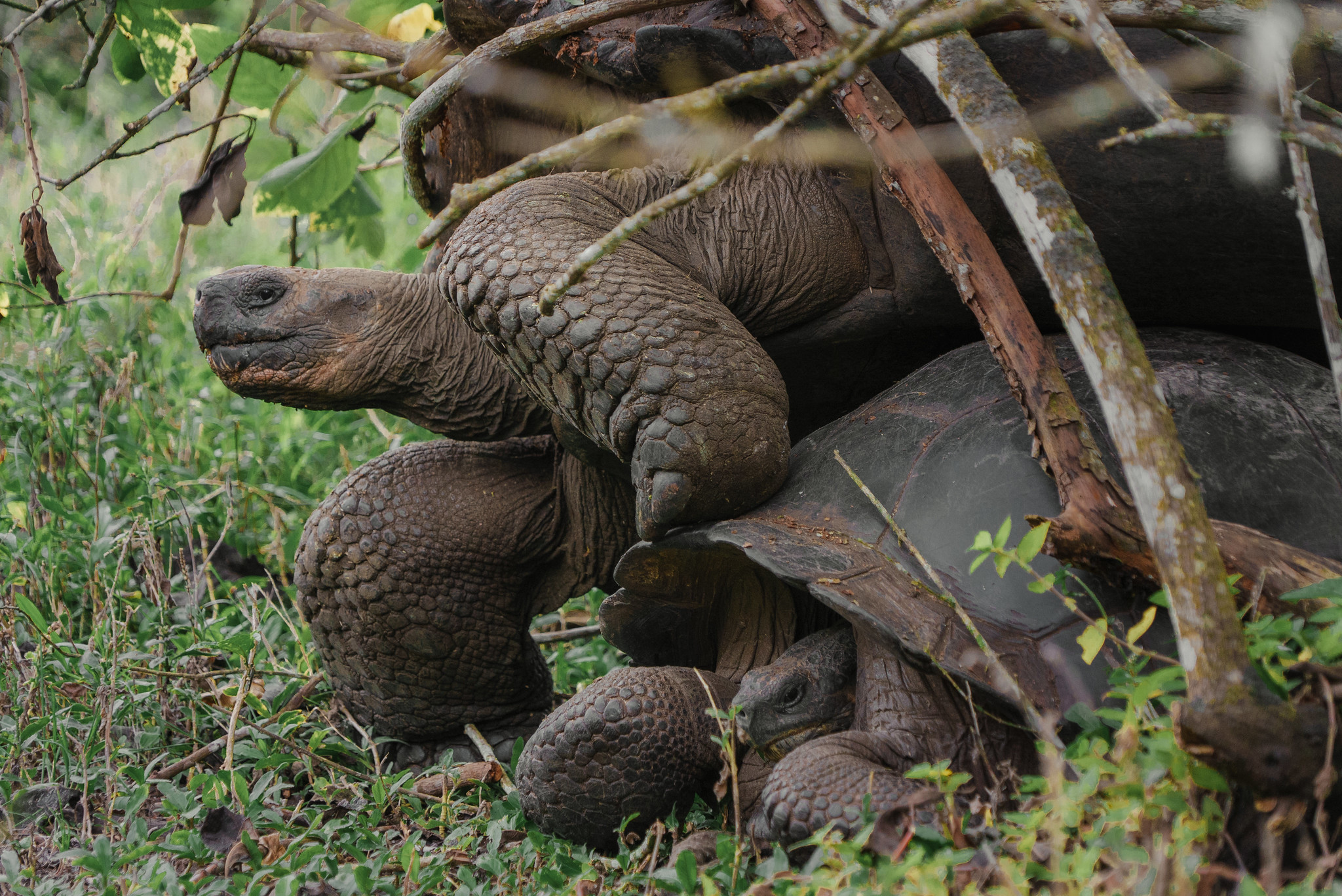Fernandina Island
History
Fernandina Island first appeared on the navigational charts and crude map produced by the British buccaneer Ambrose Cowley in 1684. He named it Narborough Island in honor of Sir John Narborough, an English naval commander of the 17th century. Its Spanish name, Fernandina, was given to honor King Fernando of Spain, who sponsored the voyage of Christopher Columbus.
The island is most famous for its continuing series of volcanic eruptions. Many of the early visitors to the archipelago commented on dramatic changes in the landscape, smoking craters, and actual eruptions. The most famous of these is the description of a violent eruption in 1825 by Benjamin Morrell, the captain of the New York-based schooner Tartar. Another important historical event was the discovery and collection in 1906 by Rollo Beck of the California Academy of Sciences Expedition of the only giant tortoise ever found on Fernandina.
Geology
Fernandina is the westernmost island in the Galapagos Islands, the third largest and youngest of the islands, less than one million years old. It is the most volcanically active and sits at the center of the hot spot that created the Galapagos Islands.
La Cumbre Volcano is a shield volcano similar to those found in the Hawaiian Islands. Its summit caldera is approximately 6.5 km wide. During an explosive eruption in 1968, the caldera collapsed, falling approximately 350 m. The northern floor of the caldera has intermittently held a small lake, whose size, boundaries and position have periodically altered during eruptions. Recent eruptions have occurred both in the caldera and on the outer slopes of the volcano, with some of them reaching the sea. Since the establishment of the Galapagos National Park, there have been 13 recorded eruptions on Fernandina, with some of them lasting for several days. The most recent eruptions were in May of 2005 and April 2009.
Today
Fernandina remains the most active and most pristine of the Galapagos volcanoes. Except for a single visitor site on the northeast edge of the island, the island is maintained in its pristine state. Fernandina has a large land iguana population, which nests both on the rim of the caldera and in its depths. Due to the cold, upwelling waters of the subsurface Cromwell Current that hits the archipelago from the west where it is pushed to the surface, the waters surrounding Fernandina and western Isabela are the richest waters in the archipelago. These cold waters also provide prime habitat for both Flightless Cormorants and Galapagos Penguins.
CONSERVATION CHALLENGES
Fernandina is the most pristine of the Galapagos Islands. Two species of the endemic rice rats are found there. The majority of rice rat species on the other islands went extinct following the introduction of Black and/or Norway Rats. Fernandina and Genovesa are the only larger islands that have never had introduced mammals. The greatest threat to the flora and fauna is the potential for future introductions of aggressive exotic species. A single tourist site on the island helps to limit potential arrivals. However, the 1990s saw several illegal camps of local fishermen on Fernandina during the peak of the sea cucumber fisheries (both legal and illegal). Periodic monitoring to detect new introductions, especially of rats, must be carried out regularly to ensure the protection of the pristine environment.
Fernandina
Visitor Site
Punta Espinosa
This visitor site offers two major components – the short walk around the small peninsula and a longer walk inland to the edge of a large aa lava flow.
This point has been raised and lowered a number of times as a result of geologic activity throughout its history, with the last known activity in 1975, when it was raised approximately 40 cm, leaving corals and red mangroves exposed.
The highlights along the coast include Marine Iguanas and Flightless Cormorants. The Marine Iguanas nest here in the early part of the year with young emerging around June. At that time, snakes are commonly seen in the nesting zone. Other attractions include penguins, sea lions, Sally Lightfoot Crabs, and occasionally Galapagos Hawks and land iguanas.
Punta Espinosa is also one of the best places to see the Lava Cactus. One of the first species to grow on young lava, it can survive with very little water. The walk inland is predominantly through a pahoehoe lava field but it ends at a great wall of aa lava.
Two dive sites are also located on Fernandina. The first is adjacent to the land site at Punta Espinosa and the second further to the south at Punta Mangle. Both are good sites for observing Flightless Cormorants and Galapagos Penguins, sea horses, marine iguanas, sea turtles, and various species of sharks and rays.
More from Galapagos Convervancy
Keep Exploring
Our Efficiency
75%
Direct conservation and grants investments
15%
Fundraising
10%
Management
